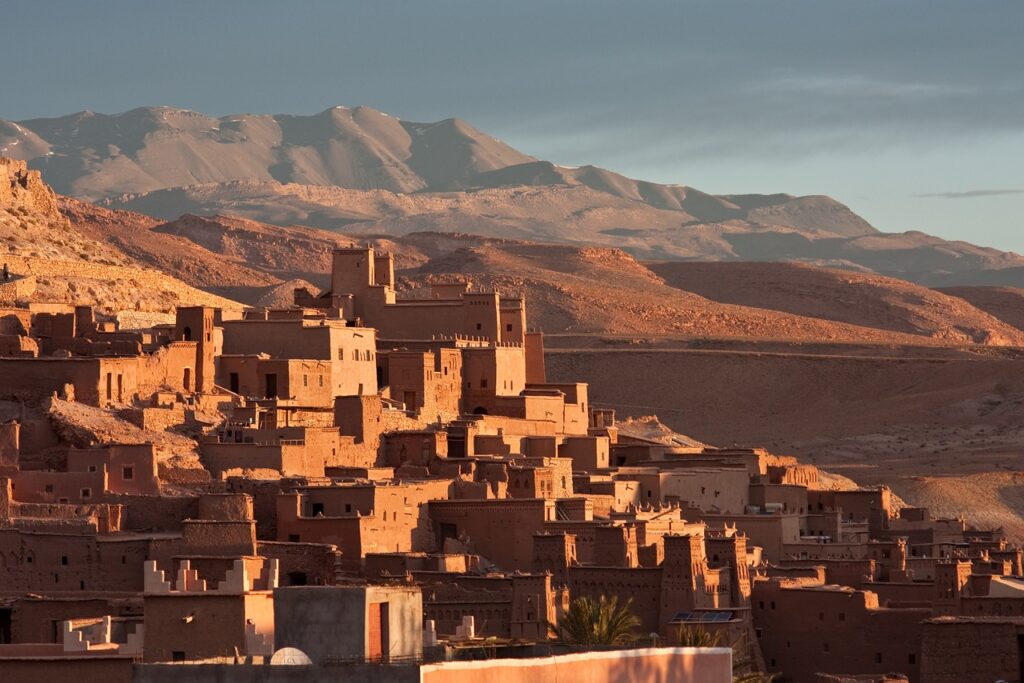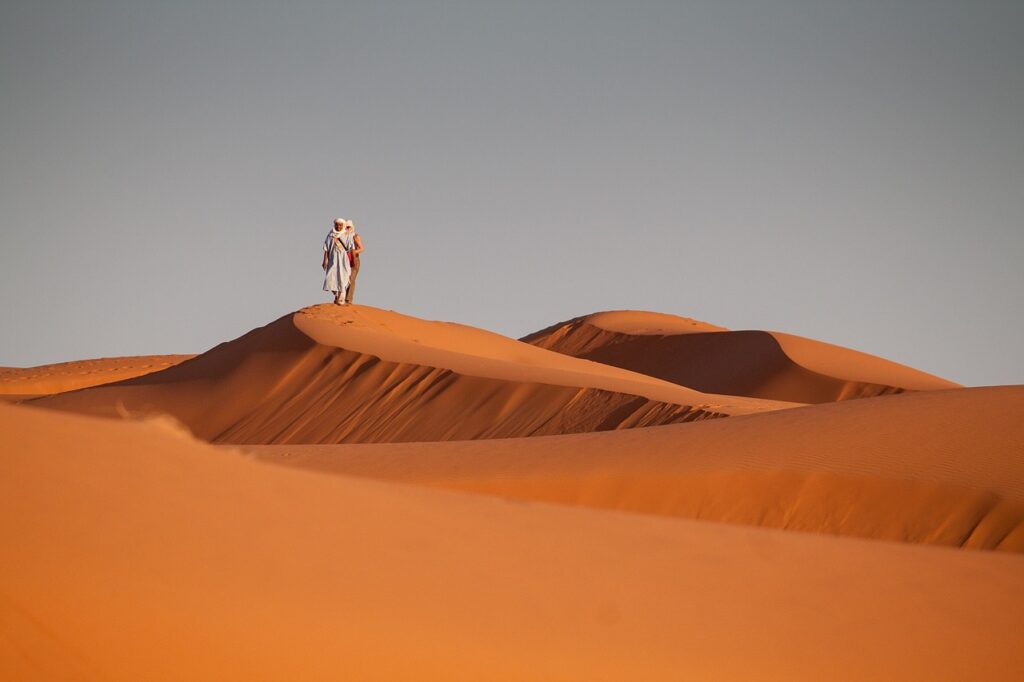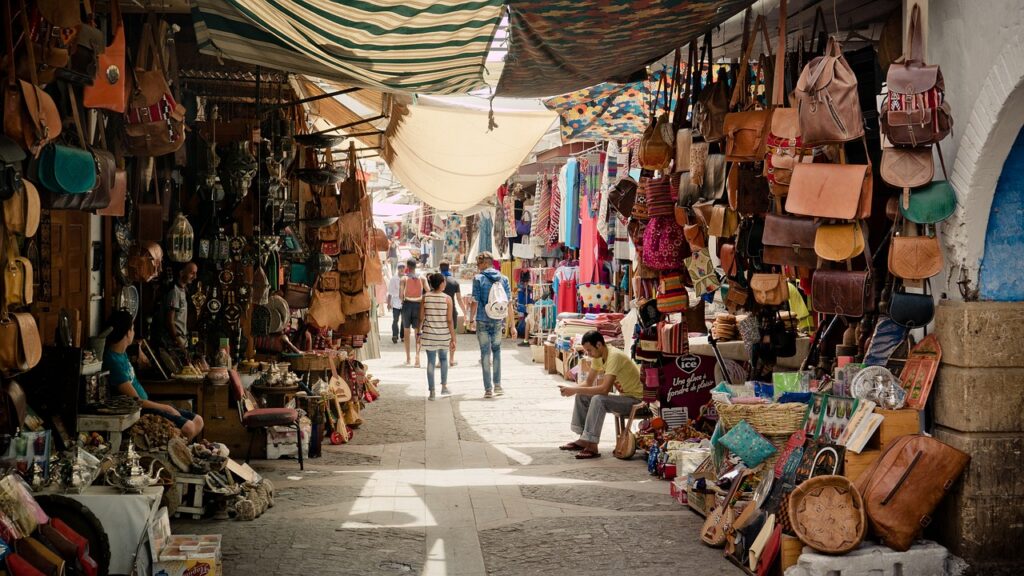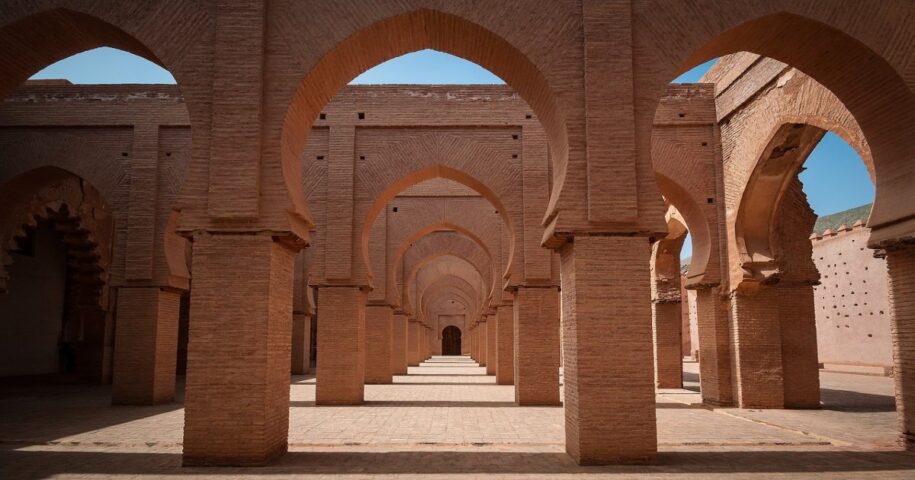People come to Morocco all year long because it is a land of differences, with busy markets and beautiful desert landscapes. But if you want to plan the best trip, you need to know about the weather and the special tips to get around there. This article covers all you need to know about traveling to Morocco in January.
Is January a Good Time to Visit Morocco?

With warm weather and fewer tourists, January is a great month to visit Morocco. It is not as busy, so hotels, tours, and other things to do can all be cheaper. You can enjoy your trip without spending too much money.
You can also enjoy some fun cultural events in January that show off Morocco’s customs and lively atmosphere. It is also a great time to go on a trip because the weather is cooler in the Sahara Desert. You can go for long walks or rides through the desert without worrying about the extreme heat.
It will be easier to enjoy Morocco’s beautiful scenery and ancient places in January because there will be fewer tourists there. You will not have to deal with a lot of people, so take your time and enjoy the views.
Temperatures in Morocco in January

When you plan a trip to Morocco in January, it is good to know that the weather can be quite different depending on where you go.
January Temperatures in Northern Morocco
You will have a great time if you plan a trip to northern Morocco in January. Temperatures are generally between 15°C and 18°C (59°F and 64°F), which is cool and pleasant. It is a great period to visit the lovely beaches in Tangier and Asilah without having to deal with the heat of summer.
It is also great for doing things outside during the day. You can eat at places in the area and enjoy tasty Moroccan food while enjoying the lovely sea views.
January Temperatures in Central Morocco
The weather in central Morocco in January is nice, with daytime temperatures between 18°C and 21°C (64°F and 70°F) in cities like Marrakech. This is a great time for tourists to get out and enjoy the area without any problems.
Being in the center of Morocco in January is a great time to walk around and see the sights. The souks, which are local markets, are active and colorful. A lot of different kinds of crafts and unique things that you will not find anywhere else can be bought there.
January Temperatures in Morocco’s Mountains
While the weather in the center of Morocco is mild and pleasant, the Atlas Mountains offer a cooler but still pleasant environment for January visitors. There are daytime temperatures in the lower parts of the mountains that run from 14°C to 17°C (57°F to 63°F).
It is not too cold during January, so it is a great place to go camping. The higher parts of the mountains are great for people who want a little more action and colder weather. Winter scenery and cold weather can be found here, making every step of your trip exciting and beautiful.
January Temperatures in Southern Morocco
Daytime temperatures in January are usually between 18°C and 23°C (64°F and 73°F) in places in the south, like Agadir and the Sahara Desert. With so much sunshine and nice weather, it’s a great place to relax on the beach or explore the desert and go for a lovely camel ride.
Average Rainfall in January
January is a great month to visit Morocco because the weather is great. Morocco usually does not get much rain at this time of the year. Depending on where you are in the country, it can rain anywhere from 20mm to 60mm. The fact that this rain fell at different times shows how different Morocco’s weather can be.
It might rain a little more near the coast because it is closer to the sea, which changes the weather. Deserts and mountains, which are inland, get even less rain. Most likely, you will have a lot of sunny days, which are great for seeing all of Morocco’s beautiful places.
If you want to plan your trip to Morocco, whether you want to see the cities or go on experiences in the outdoors, knowing about these conditions will help you make decisions.
Is it Crowded in Morocco in January?

If you want to avoid crowds, going to Morocco in January is a good idea. This month is less busy, so you can visit popular places and markets without a lot of other people. This makes your trip quieter and more private.
Hotels and tour companies often have good deals during this time because it’s not very busy. This means you can either save money or do something nice for yourself on your trip.
Are you on a tight budget and looking to book a private tour in Morocco? look no more! Touring In Morocco offers the best desert and city tours at decent prices. Contact us and customize your itinerary now!
Tips for Travelling to Morocco in January
In January, Morocco has a unique mix of interesting culture, beautiful scenery, and nice weather. For an enjoyable trip, make sure to pack what you will need and select the places you will visit.
What to Pack for Morocco in January?
When you pack for your trip to Morocco in January, you will want to bring lots of warm clothes and something to keep you dry in case it rains. Here is a simple guide on what to include:
First, it is important to pack clothes that you can wear in layers. Start with thermal shirts, which are just warm, snug shirts that keep the heat close to your body. Add a wool sweater for extra warmth. Also, pack a strong, warm coat to wear over everything when it’s really cold.
Since it might rain, do not forget to bring a waterproof jacket and an umbrella. These will help you stay dry during rain showers.
For the really chilly days, consider packing insulated pants and thick, warm socks. These will help keep your legs and feet cozy.
What to do in Morocco in January?
There are lots of fun things to do in Morocco in January. You can check out the pretty blue buildings in Chefchaouen or the busy markets in the old city of Marrakech.
The Sahara Desert is great for people who like to go on adventures. Sandboarding is like snowboarding, but you do it on sand. You can also sleep out under the stars for the night.
Check out our Merzouga Desert Tours below:
- Marrakech Desert Tours.
- Casablanca Desert Tours.
- Fes Desert Tours.
- Tangier Desert Tours.
- Agadir Desert Tours.
Do not forget to try the local food. Tagine, a stew that is cooked slowly, and couscous, a type of grain, are both tasty and will make you speechless.
In January, there may not be as many big events in Morocco, but the daily life there is still very interesting.
Frequently Asked Questions
Of course! Morocco is a great place to visit in January. Most of the time, the weather is warm, and it’s a great time to travel without the intense heat of summer.
Put on layers! Wear a light jacket or sweater in the morning and evening because it can get cold. During the day, you should wear clothes that are easy and appropriate for the mild weather.
In January, there are a number of cultural events and festivals, such as the Yennayer (Amazigh New Year) and different music festivals. These give you special views into Moroccan society.
You should be ready for all kinds of weather, bring cash because not all places take cards, follow local traditions and customs, bargain for prices at markets, and drink plenty of water while you’re traveling.


Leave a Reply